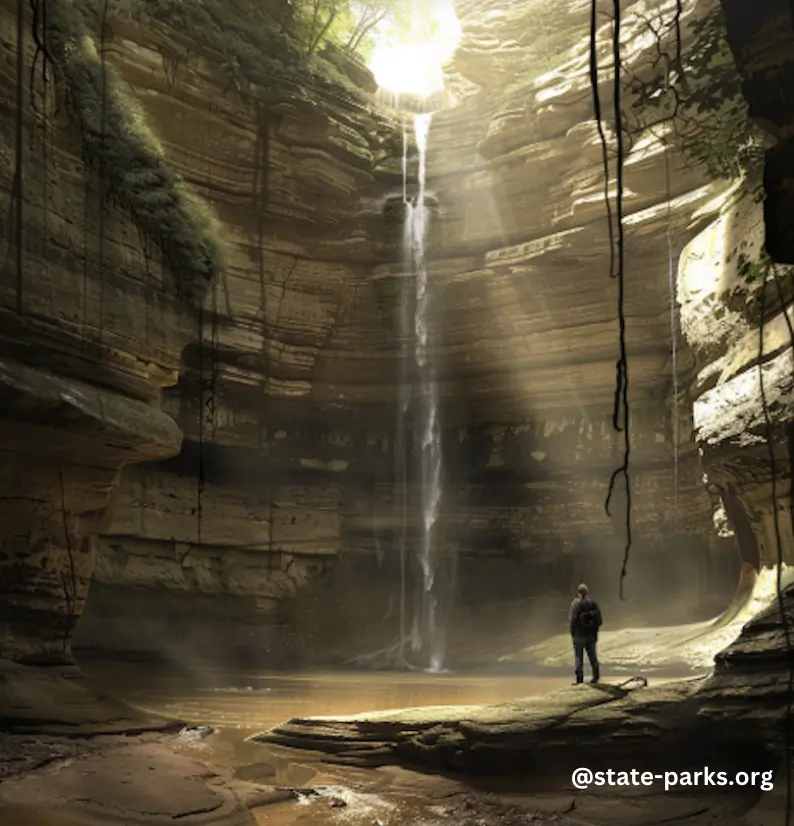Starved Rock State Park experiences varying rainfall patterns throughout the year, with the wettest months being April, May, and June. On average, the park receives about 2.4 inches of rainfall each month, with a total annual average of 26.4 inches. However, monthly averages can range from as low as 60 mm (2.36 inches) in January to as high as 156 mm (6.14 inches) in May.
Rainfall Patterns at Starved Rock State Park
The rainfall patterns at Starved Rock State Park are influenced by the park’s location and the regional climate. The park is situated in the Midwest region of the United States, which experiences a continental climate with distinct seasons.
Wettest Months
The wettest months at Starved Rock State Park are:
- April: 137 mm (5.39 inches)
- May: 156 mm (6.14 inches)
- June: 132 mm (5.20 inches)
These months correspond to the peak tourist season at the park, so visitors should be prepared for potentially wet weather.
Driest Months
The driest months at Starved Rock State Park are:
- January: 60 mm (2.36 inches)
- February: 65 mm (2.56 inches)
- December: 70 mm (2.76 inches)
During these months, the park may experience lower rainfall, but visitors should still be prepared for variable weather conditions.
Impact on Wildlife and Vegetation

The rainfall patterns at Starved Rock State Park can significantly impact the local wildlife and vegetation. Increased rainfall in spring and summer can lead to an abundance of mushrooms, providing a feast for deer and other forest inhabitants.
Mushroom Growth
The park’s wet spring and summer months create ideal conditions for mushroom growth. Visitors may be able to spot a variety of mushroom species, including:
- Morel mushrooms
- Chanterelle mushrooms
- Puffball mushrooms
These mushrooms are an important food source for many animals in the park’s ecosystem.
Wildflower Blooms
The park’s rainfall patterns also influence the growth and blooming of wildflowers. Visitors may be able to see a variety of wildflowers during the spring and summer months, such as:
- Trillium
- Bloodroot
- Dutchman’s Breeches
These wildflowers add to the park’s natural beauty and provide food and habitat for pollinators.
Planning Your Visit
When planning a visit to Starved Rock State Park, it’s important to consider the rainfall patterns and their impact on the park’s amenities and activities.
Sunrise and Sunset Times
The park’s sunrise and sunset times also vary throughout the year. For example, on May 24, 2024, the sun rises at 05:30 and sets at 20:17.
Weather Forecasts
To help plan your visit, you can consult AccuWeather’s monthly weather forecasts for Starved Rock State Park. These forecasts provide daily high and low temperatures, helping you pack appropriately for your visit.
Conclusion
Starved Rock State Park experiences a range of rainfall patterns throughout the year, with the wettest months being April, May, and June. These rainfall patterns can impact the park’s wildlife, vegetation, and visitor experience. By understanding the park’s rainfall patterns and planning accordingly, visitors can make the most of their time at this beautiful natural destination.
References:
– Rainfall Data for Starved Rock State Park
– Climate Averages for Starved Rock State Park
– AccuWeather Forecast for Starved Rock State Park
– Holiday-Weather.com Averages for Starved Rock State Park
– AccuWeather Forecast for September in Starved Rock State Park
– Starved Rock State Park Wildflowers and Mushrooms

